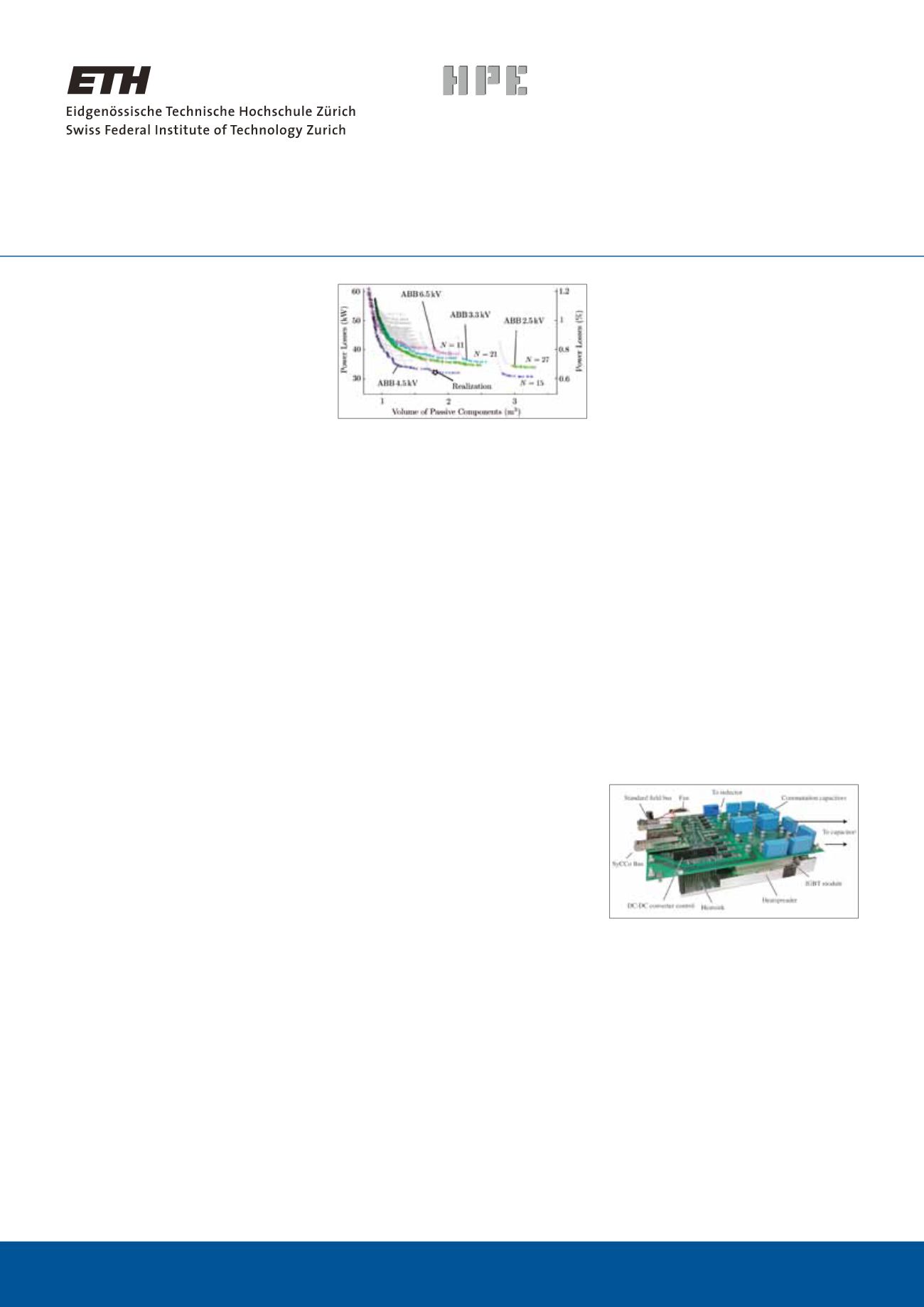
176
Research Areas
The new Institute for High Power Electronic
Systems (HPE) founded in 2010 at the ETH
Zurich focuses its research on high power
converter systems operating from low to
high voltage levels and power levels from
kW to MW range. The research is based
on a comprehensive system-oriented view
including all aspects of power electronics
and related topics. With the attained re-
search results the development of future
innovative products and also the exploi-
tation of new application areas by power
electronic systems should be enabled. The
major research areas are:
•
Novel topologies & modulation con-
cepts
•
Advanced passives (E.g. integrated
cooling concepts, integrated EMI filter-
ing, ultra low loss, low acoustic noise,
advanced isolation design…)
•
New control methods
•
Energy storage systems
•
Multi-domain modelling:
•
Electrical
•
Magnetical
•
Insulation Design
•
Thermal
•
EMI
•
Reliability
•
Multi-objective, mission profile oriented
optimization
The multi-domain modelling of the con-
verter systems enables a comprehensive
optimisation at the system- as well as at
the component-level, for example for
maximal efficiency, ultra high power
density or high reliability. Based on the
mission profile, the system design is opti-
mally adapted to the requirements mini-
mising raw material usage and costs.
Also multiple objectives as for example
the system volume and losses can be con-
sidered at the same time. This results in a
Pareto Front or Surface as shown for ex-
ample in fig. 1 where different designs of
modular multilevel converters for medium
voltage battery energy storage systems
are compared. Based on these Pareto
Fronts different topologies, modulations,
and also technologies can be compared.
With the models and the optimization al-
so the industrial design process could be
significantly accelerated enabling a shorter
time-to-market.
Laboratory Facilities
For validating the models and the opti-
mization procedures, prototype systems
based on cutting edge technology are
designed and built. An example is given
in fig. 2 showing a prototype of a mod-
ule for a 250kW modular multi-level con-
verter (M2C) with an AC voltage of 9kV
and a DC voltage of 35kV. The design of
the converter system is optimized for a
high power density and efficiency. The
converter system is controlled via a new-
ly developed serial bus system, which
synchronizes the switching period of all
modules within +/-5ns.
For performing experiments, a fully
equipped laboratory with the following
energy sources is available:
•
0..400V / 250KVA
•
0..800V / 250KVA
•
0..25kVAC / 250KVA
•
0..35kVDC / 250VDC (bidirectional)
•
0..2kVDC / 100kW (bidirectional)
•
400V arbitrary AC source
Additionally, a faraday cage for shielding
and partial discharge tests as well as dif-
ferent water and air cooling facilities and
a 2t crane are available.
Swiss Federal Institue of Technology Zurich
Fig.1 Example of a Pareto Front in the volume –
power loss plane for a modular multilevel converter
(M2C), where different semiconductor technologies
and number of modules N are considered. The
Pareto-Front defines the maximal achievable
performance for a compromise between system
volume and efficiency
Fig. 2 Prototype of a module for a 250kW M2C
bidirectional rectifier system for connecting a 9kV
AC grid to 35kV DC test loads. The module voltage
is 2.2kV and the IGBTs in the module switch at a
frequency of 1kHz.
for High
Systems
Laboratory for High
Power Electronic Systems


